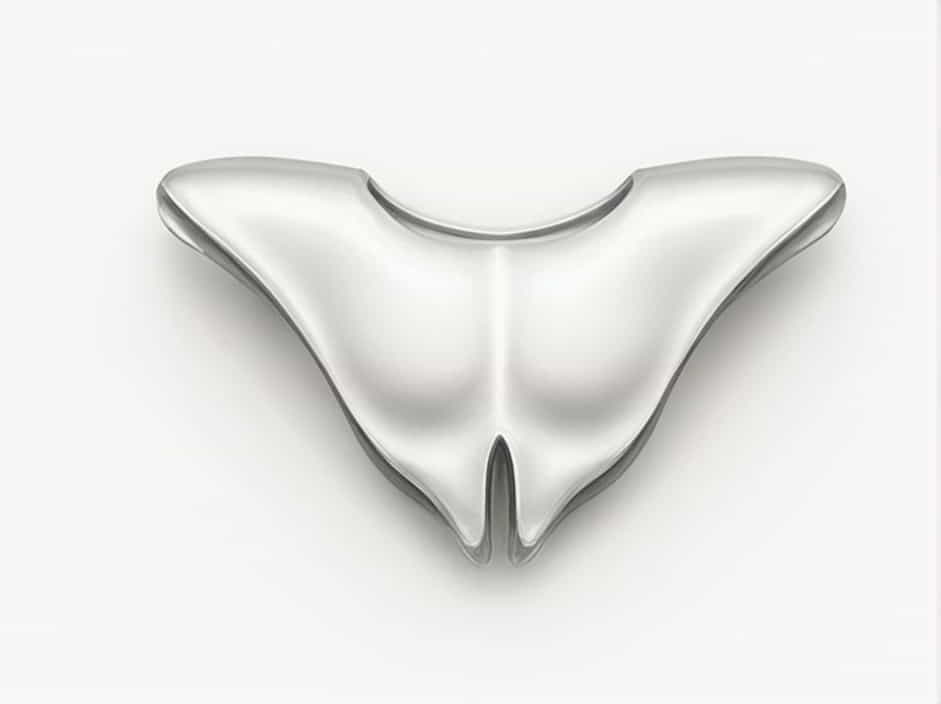The scapula and clavicle are two essential bones of the shoulder girdle, working together to provide stability, mobility, and support to the upper body. The scapula, also known as the shoulder blade, connects to the clavicle (collarbone) through the acromioclavicular joint, allowing for a wide range of arm and shoulder movements.
Understanding the relationship between these bones helps explain how the shoulder functions, how injuries occur, and why maintaining strong and flexible muscles around them is important for daily activities.
Anatomy of the Scapula and Clavicle
1. The Scapula: The Shoulder Blade
The scapula is a flat, triangular bone located on the upper back, connecting the humerus (upper arm bone) to the clavicle. It serves as an attachment point for multiple muscles and plays a key role in shoulder movement and stability.
Key Features of the Scapula
- Acromion – A bony projection that connects with the clavicle.
- Glenoid Cavity – A shallow socket where the humerus fits, forming the shoulder joint.
- Spine of the Scapula – A ridge that provides muscle attachment and structural support.
2. The Clavicle: The Collarbone
The clavicle is a long, S-shaped bone located at the front of the shoulder. It acts as a bridge between the scapula and sternum (breastbone), supporting the shoulder’s range of motion while protecting nerves and blood vessels underneath.
Key Features of the Clavicle
- Sternal End – Connects to the sternum at the sternoclavicular joint.
- Acromial End – Connects to the scapula at the acromioclavicular joint.
- Curved Shape – Provides flexibility and helps absorb impact from falls.
How the Scapula and Clavicle Work Together
The scapula and clavicle function as a unit, connected by the acromioclavicular (AC) joint, which allows for shoulder mobility while maintaining stability.
1. The Acromioclavicular (AC) Joint
This joint forms the direct connection between the scapula and clavicle. It allows the shoulder blade to move freely, enabling motions like lifting, rotating, and stabilizing the arm.
Common AC joint movements include:
- Elevation and Depression – Raising and lowering the shoulders.
- Protraction and Retraction – Moving the shoulders forward and backward.
- Rotation – Adjusting the angle of the shoulder blade.
2. Role in Shoulder Movement
Together, the scapula and clavicle support:
- Arm lifting and rotation – Necessary for activities like reaching, throwing, and lifting.
- Weight distribution – Helps absorb impact and prevent injuries.
- Muscle coordination – Provides a foundation for muscles like the deltoid, trapezius, and rotator cuff.
Common Injuries Involving the Scapula and Clavicle
Due to their role in movement and support, both bones are prone to injuries, especially in sports, falls, and accidents.
1. Clavicle Fractures
The clavicle is one of the most commonly broken bones due to its location and role in absorbing force.
Causes:
- Falls on an outstretched arm
- Direct impact to the shoulder
- Sports injuries (cycling, football, skiing, etc.)
Symptoms:
- Severe pain and swelling
- Visible deformity or bump
- Limited shoulder movement
2. Acromioclavicular (AC) Joint Injuries
The AC joint can be sprained or dislocated, often referred to as a “shoulder separation.”
Causes:
- Hard falls on the shoulder
- Direct trauma from contact sports
Symptoms:
- Pain and swelling at the top of the shoulder
- Difficulty lifting the arm
- A visible bump where the clavicle meets the scapula
3. Scapular Fractures
Though less common, scapular fractures can occur due to high-impact trauma like car accidents or falls from great heights.
Symptoms:
- Pain in the upper back and shoulder
- Bruising and swelling
- Limited arm movement
How to Strengthen and Protect the Scapula and Clavicle
1. Strengthening Exercises
Building shoulder strength and flexibility reduces the risk of injury. Some key exercises include:
- Shoulder Shrugs – Strengthens the trapezius muscles.
- Scapular Retraction – Improves posture and stability.
- Resistance Band Shoulder Rotations – Enhances rotator cuff strength.
- Push-ups – Engages scapular stabilizers and pectoral muscles.
2. Proper Posture
Maintaining good shoulder posture prevents strain on the scapula and clavicle.
- Keep shoulders back and relaxed
- Avoid slouching or hunching forward
- Use ergonomic seating when working long hours
3. Preventing Shoulder Injuries
- Warm up before physical activity to prepare muscles.
- Avoid carrying heavy loads on one side to prevent imbalance.
- Wear protective gear in contact sports.
The scapula and clavicle work together to support shoulder movement, strength, and flexibility. The acromioclavicular joint acts as a crucial connection, enabling smooth arm mobility while maintaining stability.
Injuries to these bones can significantly impact daily activities and sports performance, making proper care, strengthening exercises, and injury prevention essential. Understanding the relationship between the scapula and clavicle helps in maintaining shoulder health and reducing injury risks, ensuring a strong and flexible upper body.
